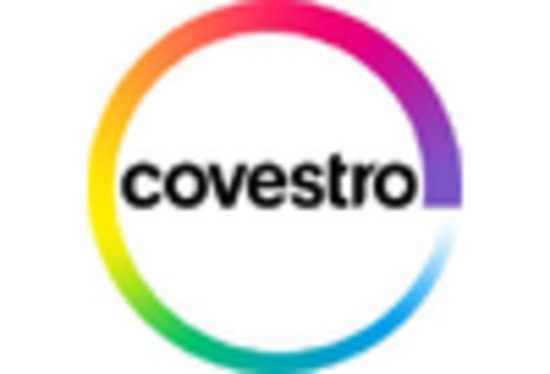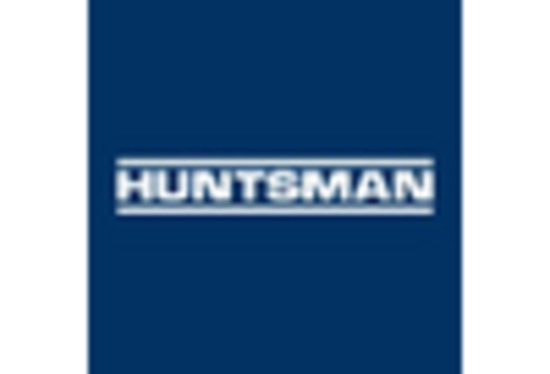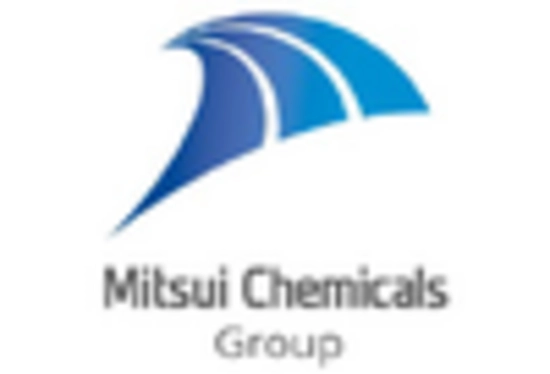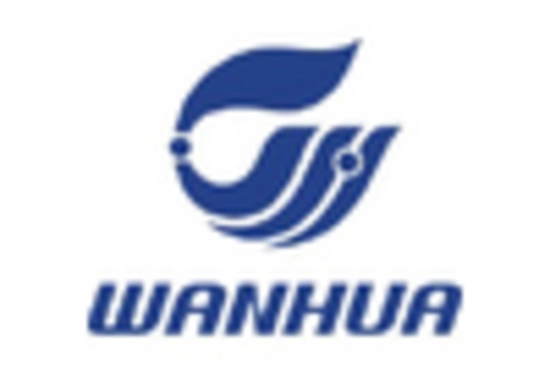Automotive Industry Growth
The automotive sector plays a crucial role in the MDI TDI Polyurethane Market, as manufacturers increasingly adopt polyurethane materials for various applications. The lightweight nature of polyurethane contributes to fuel efficiency, making it an attractive option for vehicle manufacturers aiming to meet stringent emissions regulations. In 2025, the automotive industry is expected to witness a compound annual growth rate of around 4%, further driving the demand for MDI and TDI-based polyurethanes. This growth is likely to be fueled by the rising production of electric vehicles, which require advanced materials for insulation and structural components, thereby enhancing the market's potential.
Expansion of End-Use Industries
The expansion of various end-use industries is a vital driver for the MDI TDI Polyurethane Market. Sectors such as footwear, electronics, and packaging are increasingly utilizing polyurethane materials due to their versatility and performance characteristics. The footwear industry, in particular, is projected to grow at a rate of approximately 6% annually, driven by consumer demand for lightweight and comfortable products. Additionally, the packaging sector is adopting polyurethane for its protective qualities, further broadening the application scope. This diversification across industries is likely to bolster the overall demand for MDI and TDI-based polyurethanes, ensuring a dynamic market landscape.
Innovations in Product Development
Innovative product development is a key driver in the MDI TDI Polyurethane Market, as manufacturers strive to create advanced materials that meet evolving consumer needs. Recent advancements in formulation technology have led to the development of high-performance polyurethanes with enhanced properties such as improved durability, flexibility, and resistance to environmental factors. These innovations are particularly relevant in sectors like furniture and bedding, where consumer preferences are shifting towards high-quality, sustainable products. The introduction of bio-based polyurethanes is also gaining traction, potentially expanding the market reach and appealing to environmentally conscious consumers.
Rising Demand in Construction Sector
The MDI TDI Polyurethane Market is experiencing a notable surge in demand driven by the construction sector. As urbanization accelerates, the need for durable and energy-efficient building materials becomes paramount. Polyurethane foams, derived from MDI and TDI, are increasingly utilized in insulation applications, contributing to energy savings and improved thermal performance. In 2025, the construction industry is projected to account for a significant share of the polyurethane market, with estimates suggesting a growth rate of approximately 5% annually. This trend indicates a robust future for MDI TDI polyurethanes as they align with the industry's focus on sustainability and energy efficiency.
Increasing Awareness of Energy Efficiency
The MDI TDI Polyurethane Market is significantly influenced by the growing awareness of energy efficiency among consumers and businesses alike. As energy costs rise, there is a heightened focus on materials that can enhance insulation and reduce energy consumption. Polyurethane foams, known for their superior thermal insulation properties, are increasingly favored in both residential and commercial applications. In 2025, the market is likely to see a continued emphasis on energy-efficient solutions, with MDI and TDI polyurethanes playing a pivotal role in meeting regulatory standards and consumer expectations for sustainability.

















Leave a Comment